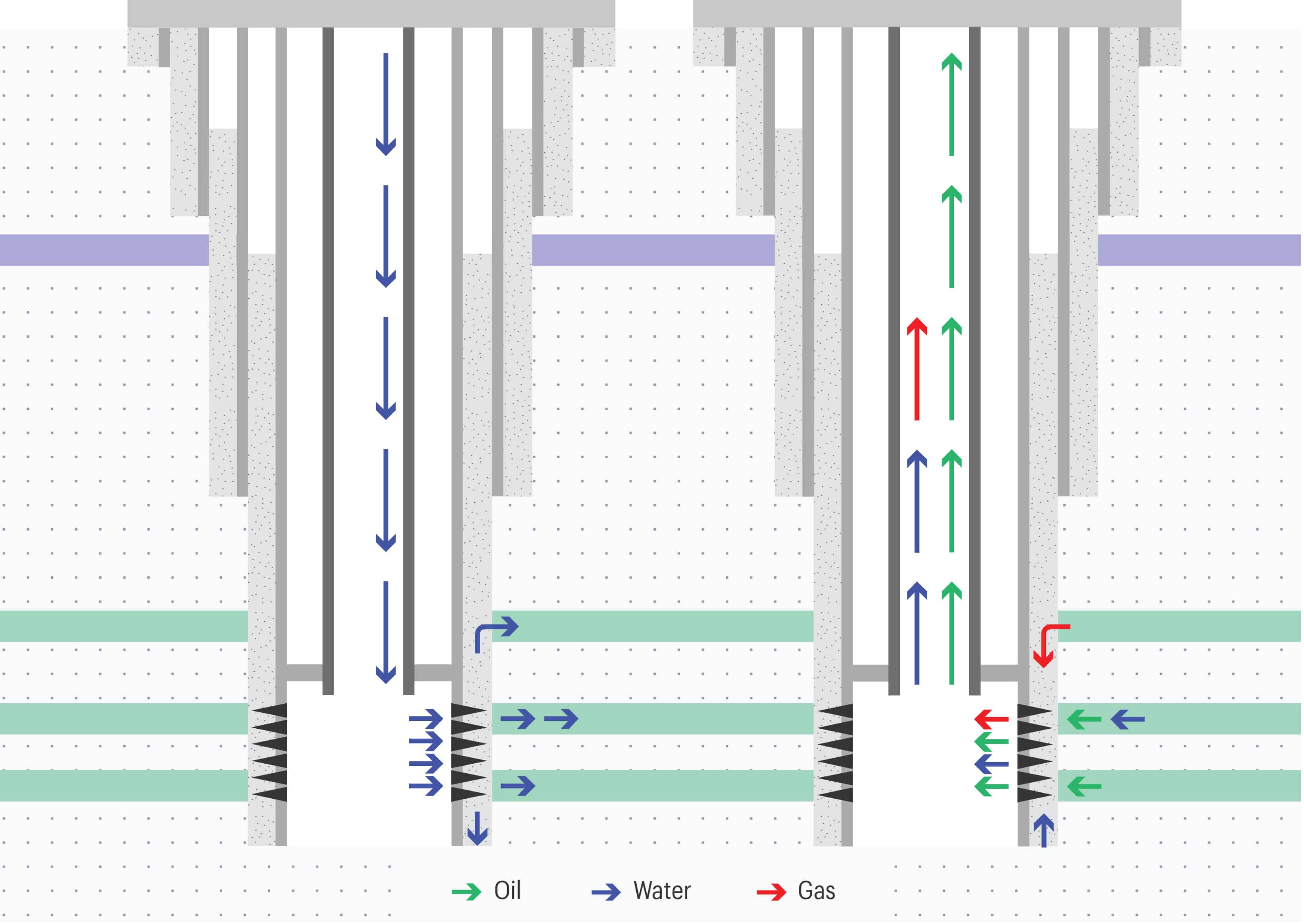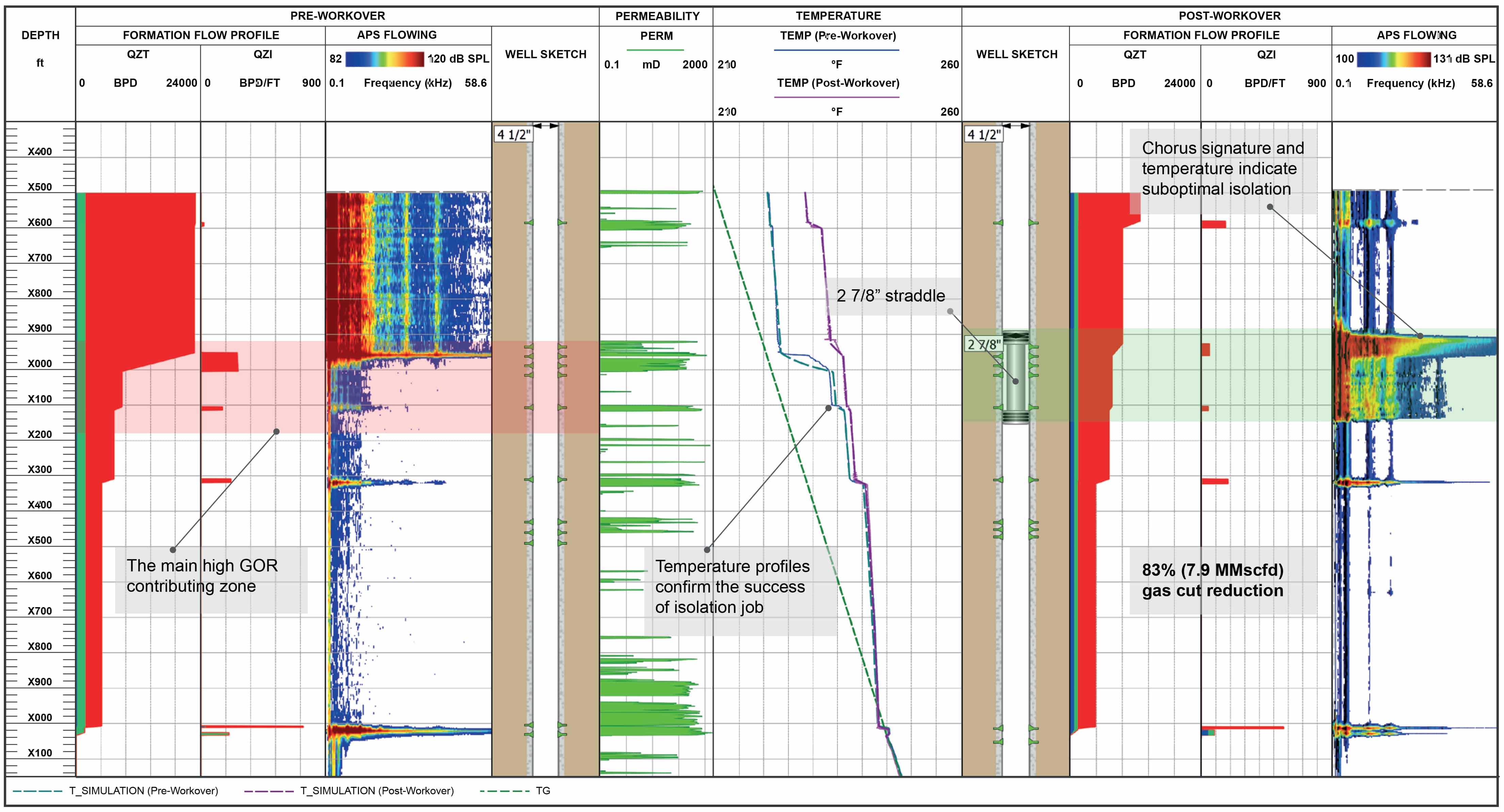A high gas–oil ratio leads to unnecessarily high carbon emissions, lower oil production and increased carbon-per-barrel rates. Managing and processing excess gas requires substantial energy and capital expenditure for surface infrastructure and facilities. In this case, the aim was to identify zones for gas shut-off that would enable the operator to optimise surface infrastructure capacity, maximise oil production and minimise carbon footprint.
Well A-1 features a 7 in. x 4-1/2 in. cemented liner across several commingled oil and gas-bearing zones. Developing compartmentalised multi-stacked reservoirs using simplified well completions makes it challenging for diagnostics to determine production allocation, reveal flow assurance issues, understand reservoir connectivity, monitor individual well performance, and forecast total field production.
Gas production had already exceeded the limit of surface processing facilities for well operation with existing production rates, which meant the operator had to choke back production. In addition, the unwanted gas was taking up part of the operator’s pipeline quota and creating other transportation and flow assurance issues. The well contains at least five clastic reservoir zones, each with multiple layers, that are perforated across an interval of more than 1,500 ft. This level of complexity meant that conventional production logging tools were unable to adequately characterise flow or confidently distinguish the main gas-contributing layers.


